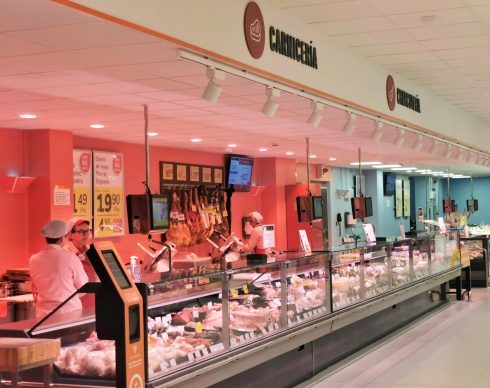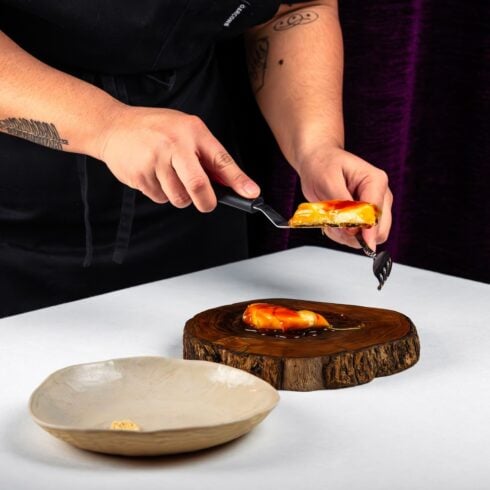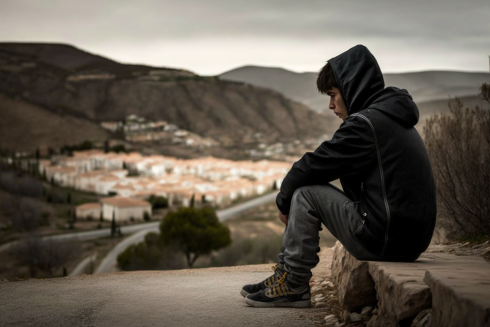FIRST the good news: In Spain, at least, we can still find the food we want to buy. Over in the UK, a shortage of both home-grown and imported fruit and vegetables has led to supermarket rationing, and a slew of news stories with the government claiming it’s the ‘bad weather in Spain’ – much to the amusement of the media here.
As a spokesman for FEPEX, the Spanish federation of exporters, clarified: “There are no problems exporting to any countries in the EU.”
Quite simply, higher production costs, the UK’s own farming policies and, particularly, Brexit, have caused the problem.
Those higher production costs are also affecting us in Spain. So, while food items are not being rationed here, they are increasingly unaffordable to many.
To help struggling consumers, Spain’s Unidas Podemos party recently proposed a discount of 14.4% on a set of 20 basic food items. This is similar, in principle, to the 20 centimos per litre discount that applied at petrol stations between April and December 2022.
A constant crisis
Spain’s Minister for Agriculture, Luis Planas, is not so keen on the idea and is optimistic that inflation has now finally ‘reached a ceiling’ – despite the prices remaining as high as ever.
He points out that the government has already introduced VAT (IVA) reductions on certain foods. On January 1, VAT was cut from 4% to 0% on basic items, including bread, milk, eggs, cheese, fruit, vegetables, and cereals. Tax on oil and pasta also fell from 10% to 5%.
However, these foods remain expensive throughout the nation.
According to a recent study by web portal, Trading Economics, Spain’s food cost 15.5% more in January than January 2022 (the rise is even higher in the UK at 17.1%)
A weekly food shop that cost €200 a year ago in Spain now costs €231.
What exactly has risen?
Data from Spain’s National Statistics Institute (INE) confirms that the price of staple foods has reached historic highs.
Around 30 different foods are 10% more expensive than a year ago, including dairy products, such as cheese (22.1%), yoghurt (25.1%), and milk (37.5%).
It’s really bad news if you like a fry-up: olive oil has risen by 35.2% and eggs by 29.8%.
Meanwhile, rice has increased 21.7%, pasta 19%, bread 15.4%, and breakfast cereals by 11.4%. Vegetables are up by more than 10%.
Maybe it really is time to turn vegetarian: chicken and turkey are up by 15.1%, pork by 13.8% and beef, 13.2%. Frozen fish has increased 13.2% and shellfish, 13.4%.

Why is this so bad?
People with lower incomes, and already stretched families, are disproportionately affected by food price inflation.
Some parents told the Olive Press that goods previously considered ‘normal’ have effectively become ‘luxuries’.
Anna Langdon, a British expat, based in Granada, explained: “I’m feeding four people on a pension meant for one, and it is more of a struggle than before.
“As I’ve raised six kids on homemade soups and home-grown food with little money for decades, I was relatively prepared for the crisis. However, even staple foods have increased in price, like butter and cheese, and we’ve had to use less and less and our portion sizes have shrunk a lot.”
She added: “The price increase in pet food is difficult and as I’ve got two cats and an elderly dog it’s sometimes cheaper to buy offal and rice.”
Meanwhile, Lenka, a Romanian mother of three, based in Orgiva, explained that she is having to cook something hearty that ‘ideally lasts for two or three days’.
“For example, a whole cooked chicken can be used to make soup the second day,” she said.
However, many working parents rely on shop-bought snacks, and the cost of these has multiplied.
“I know of a case where the snack a child takes to school each day has gone up by 300%, affecting the parent’s buying behaviour,” explained Lucy Hayes Logan, who runs her own advice agency, Tus Alpujarras.
“The impact can be huge for those on a set wage, one-salary households, the self-employed and people recovering from the financial losses caused by Covid.”
“The proposed 14% discount idea is a great idea, but how will it be funded? What are the food items and why those 20? Which brands? I’ve seen reduced items in supermarkets that look attractive, but the discounts are on selected lines, and often there are less-known brands that are still cheaper.”
Will a discount help most consumers?
Unless all foodstuffs are reduced, a basket of 20 goods won’t help everyone. For example, it’s unlikely to include pet food, which has seen huge rises, with a 20kg sack of cereal going from €11 to €18 to 20.
Leonie SURNAME, owner of the Camac health food shop, in Orgiva, raises different concerns. “Smaller outlets need money from their sales to restock. How long will the 14% reimbursement from the government take to arrive?”
Cepsa petrol station boss, Joaquin Rodriguez, said: “When the government discount scheme for fuel ended, motorists rushed to fill their tanks, then returned to the same buying behaviour as before.” Cepsa now applies its own 12% discount with a loyalty card.
How to save money
Whether or not the government decides to deduct 14.4% from certain food items, consumers can save money by being savvy.
For starters, download the store loyalty apps: both Lidl and Dia have apps giving access to discount coupons, while Consum runs a savings scheme (the Mundo Consum card) where members can recoup a percentage of their monthly spend, delivered as an in-app voucher.
When in store, seek own-brand goods that cost less than, for example, imported British goods. Also look for discounts of the day, and multi-buy offers.
If all else fails, start planting your own vegetables and keep goats and chickens, and return to the centuries-old traditions of rural Spain. It’s not like we’re short of rural space.
READ MORE
- Inflation is on the up again as electricity bills and food and drink get more expensive
- Spain’s PM Pedro Sanchez is considering measures to cut basic food prices
- Malagueños amongst the most squeezed in Spain by shocking jump in food prices
Click here to read more Other News from The Olive Press.








